Difference between revisions of "Exotic leather"
| (28 intermediate revisions by one user not shown) | |||
| Line 4: | Line 4: | ||
| + | ==Exotic leather== | ||
<p align=center> | <p align=center> | ||
[[bild:Waran-Iguazu-Brasilien-03.jpg|100px]] | [[bild:Waran-Iguazu-Brasilien-03.jpg|100px]] | ||
| Line 20: | Line 21: | ||
| − | + | The earth has more than 5,000 species of mammal, about 50 of which provide [[Hide - Skin|hides]] for [[Tanning leather|leather production]]. Most of the world's processed [[Leather|leather]] comes from animals that are reared for meat and/or dairy consumption and/or [[Sheepskin - Lambskin|wool]]. Besides other uses, the hides and/or skin from animals such as [[Cow leather|cows]], [[Zebu leather|zebu]], [[Water buffalo leather|water buffalo]], [[Sheepskin - Lambskin|sheep]], [[Goatskin|goats]] and [[Pig leather|pigs]] are used for by-products. This makes up more than 99% of the [[Leather industry|world production]]. Leather that comes from other animal species can usually be called exotic leather. | |
<p align=center> | <p align=center> | ||
| − | [[bild:Kuh-03.jpg| | + | [[bild:Kuh-03.jpg|500px]] |
| − | [[bild:Aalstrich-01.jpg| | + | </p> |
| − | [[bild:Schwein-02.jpg| | + | <p align=center> |
| + | [[bild:Aalstrich-01.jpg|250px]] | ||
| + | [[bild:Schwein-02.jpg|250px]] | ||
</p> | </p> | ||
<p align=center> | <p align=center> | ||
| Line 35: | Line 38: | ||
{| border=1 | {| border=1 | ||
| − | ! width=30% bgcolor=#eeeeee valign=top| | + | ! width=30% bgcolor=#eeeeee valign=top| animal husbandry in billion |
| − | ! width=30% bgcolor=#eeeeee valign=top| percentage leather production | + | ! width=30% bgcolor=#eeeeee valign=top| percentage global leather production |
| + | ! width=30% bgcolor=#eeeeee valign=top| percentage global meat production (weight) | ||
|- | |- | ||
| − | | bgcolor=#ffffff align=center | cows | + | | bgcolor=#ffffff align=center | cows/calves/buffalos 2020 1.5 billion (+15.6% compared to 2000) |
| − | | bgcolor=#ffffff align=center | | + | | bgcolor=#ffffff align=center | 2017 approx. 69% (2013 approx. 64%) |
| + | | bgcolor=#ffffff align=center | 2020 21.1% (2013 22%) | ||
|- | |- | ||
| − | | bgcolor=#ffffff align=center | sheep | + | | bgcolor=#ffffff align=center | sheep 2020 1.3 billion (+18.5% compared to 2000) |
| − | | bgcolor=#ffffff align=center | | + | | bgcolor=#ffffff align=center | 2017 approx. 13% (2013 approx. 14%) |
| + | | bgcolor=#ffffff align=center | 2020 4.7% (2013 4.5%) sheep + goats | ||
|- | |- | ||
| − | | bgcolor=#ffffff align=center | goats | + | | bgcolor=#ffffff align=center | goats 2020 1.1 billion (+48.7% compared to 2000) |
| − | | bgcolor=#ffffff align=center | | + | | bgcolor=#ffffff align=center | 2017 approx. 12% (2013 approx. 10%) |
| + | | bgcolor=#ffffff align=center | data in sheep | ||
|- | |- | ||
| − | | bgcolor=#ffffff align=center | pigs | + | | bgcolor=#ffffff align=center | pigs 1 billion (-6% to 2000) |
| − | | bgcolor=#ffffff align=center | 5- | + | | bgcolor=#ffffff align=center | 2017 approx. 7% (2013 approx. 12%) |
| + | | bgcolor=#ffffff align=center | 2020 32.2% (2013 36.5%) | ||
| + | |- | ||
| + | | bgcolor=#ffffff align=center | poultry, thereof chickens 33.1 billion (+130% to 2000) | ||
| + | | bgcolor=#ffffff align=center | very low | ||
| + | | bgcolor=#ffffff align=center | 2020 38.9% (2013 35%) | ||
| + | |- | ||
| + | | bgcolor=#ffffff align=center | exotics - quantities not known | ||
| + | | bgcolor=#ffffff align=center | < 1% | ||
| + | | bgcolor=#ffffff align=center | 2020 11% (other animal species) | ||
|} | |} | ||
</center> | </center> | ||
| − | + | The global population of livestock can only be estimated and, depending on the source, sometimes deviates by several hundred million animals. Irrespective of this, there has been a widespread increase in animal husbandry, with the exception of pigs. However, since [[pigskin]] accounts for only a small amount of leather production, the total number of animals potentially used for [[leather production]] has increased from 2000 to 2020. Despite the increase in people who eat [[vegan leather|vegan or vegetarian]] food, there is no decrease in animal husbandry. | |
| − | + | Exotic leathers are either made from relatively rare animal species or from skin parts of animals that are rarely [[Tanning leather|processed]] into leather. Some exotic leathers are protected by the [[CITES - Convention on International Trade in Endangered Species of wild fauna and flora|CITES (Convention on International Trade in Endangered Species of wild fauna and flora)]]. [[Crocodile leather|Crocodile]] or [[Snakeskin|snake skin]] leathers are commonly addressed as leather. However, other exotic leathers like [[Fish leather|fish leather]], leather from [[Chicken leather|chicken legs]] or from [[Rumen leather|cow belly/stomach]] also exist. Depending on the culture, the definition of exotic leather, can differ. | |
| − | + | Is exotic leather [[Leather quality|better]] than other standard forms of leather? Some exotic leather surfaces may [[Haptic evaluation of leather surfaces|feel]] softer, hence making them more appealing, or they might have a very different look. [[Fur - Fur skin|Fur]] for instance can be particularly soft or have a unique colour. However, demand for leather is generally satisfied by the hides from animals that account for 90% of world meat production. In recent years, there seems to have been a growing trend for artificial man-made leathers, such as [[Artificial leather - Imitation leather|vinyl leatherette]]. None of the exotic leathers offer superior quality, durability, resistance or other practical properties. Mostly, exotic leathers are unique mainly because of their texture, look and colour which makes them more valuable. | |
| + | [[Water buffalo leather]], [[buffalo leather]], [[Deerskin|deerskin]], [[Beaver fur|beaver fur]], [[Reindeer leather|reindeer leather]] or [[Elkskin leather|elkskin]] are not very common, but they are not exotic leather in the strict sense. | ||
| + | |||
| + | <p align=center> | ||
| + | [[bild:Bison-02.jpg|500px]] | ||
| + | </p> | ||
<p align=center> | <p align=center> | ||
| − | + | [[bild:Bueffellederl-01.jpg|250px]] | |
| − | [[bild:Bueffellederl-01.jpg| | + | [[bild:Hirschleder-07.jpg|250px]] |
| − | [[bild:Hirschleder-07.jpg| | + | |
</p> | </p> | ||
<p align=center> | <p align=center> | ||
| − | ''[[ | + | ''[[Bison leather|Bison]] - [[Water buffalo leather|Water buffalo]] - [[Deerskin|Deer]]''<br></p> |
<p> </p> | <p> </p> | ||
| − | The [[Leather|leather]] of the following species | + | ==Animal species of exotic leather== |
| + | The [[Leather|leather]] of the following species are "exotic leather": | ||
* [[Alligator leather]] | * [[Alligator leather]] | ||
| + | * [[Alpaca fur & Llama fur|Alpaca fur]] | ||
* [[Antelope leather]] | * [[Antelope leather]] | ||
* [[Armadillo leather]] | * [[Armadillo leather]] | ||
* [[Bird leather]] | * [[Bird leather]] | ||
* [[Bull testicles]] | * [[Bull testicles]] | ||
| + | * [[Alligator leather#Caiman leather - Caiman skin|Caiman leather]] | ||
* [[Camel leather]] | * [[Camel leather]] | ||
* [[Carpincho leather]] | * [[Carpincho leather]] | ||
| Line 81: | Line 104: | ||
* [[Crocodile leather]] | * [[Crocodile leather]] | ||
* [[Dog leather]] | * [[Dog leather]] | ||
| + | * [[Donkey leather]] | ||
* [[Elephant leather]] | * [[Elephant leather]] | ||
* [[Fish leather| Fish leather: Eel, shark, salmon, moray eel, stingray and many others]] | * [[Fish leather| Fish leather: Eel, shark, salmon, moray eel, stingray and many others]] | ||
| Line 88: | Line 112: | ||
* [[Horsehide - Horse leather]] | * [[Horsehide - Horse leather]] | ||
* [[Kangaroo leather]] | * [[Kangaroo leather]] | ||
| + | * [[Alpaca fur & Llama fur|Llama Fur]] | ||
* [[Lizard leather]] | * [[Lizard leather]] | ||
* [[Ostrich leather]] | * [[Ostrich leather]] | ||
| Line 93: | Line 118: | ||
* [[Pig leather#Peccary leather|Peccary leather]] | * [[Pig leather#Peccary leather|Peccary leather]] | ||
* [[Rumen leather]] | * [[Rumen leather]] | ||
| − | * [[Sealskin]] | + | * [[Sealskin leather]] |
| − | * [[ | + | * [[Snakeskin]] |
* [[Turtle skin]] | * [[Turtle skin]] | ||
* [[Walrus leather]] | * [[Walrus leather]] | ||
| Line 102: | Line 127: | ||
<p align=center> | <p align=center> | ||
| − | [[bild:Pferd-02.jpg| | + | [[bild:Pferd-02.jpg|500px]] |
| − | [[bild:Strauss-02.jpg| | + | </p> |
| − | [[bild:Lachs-002.jpg| | + | <p align=center> |
| + | [[bild:Strauss-02.jpg|250px]] | ||
| + | [[bild:Lachs-002.jpg|250px]] | ||
</p> | </p> | ||
<p align=center> | <p align=center> | ||
| Line 110: | Line 137: | ||
<p> </p> | <p> </p> | ||
| − | These leathers are in other countries and cultures | + | These leathers are not necessarily exotic leather in other countries and cultures: [[Kangaroo leather]], [[Horsehide - Horse leather|horse leather]] or [[Ostrich leather|ostrich leather]]. |
| − | From a lot of species the skin is processed to leather, while the hair is obtained ([[ | + | From a lot of species, the skin is processed to leather, while the hair is obtained ([[Hide - Skin|hides]], [[Fur - Fur skin|furs]]). For example, [[Cow hide|cow hide]], [[Sheepskin - Lambskin|sheepskin]], [[Rabbit hair - Rabbit fur|rabbit fur]], [[Sealskin leather|sealskin]] or [[Beaver fur|beaver fur]]. |
| − | + | ||
| − | + | ||
| − | + | ||
| Line 121: | Line 145: | ||
<br> | <br> | ||
<p align=center> | <p align=center> | ||
| − | <flashow> | + | <flashow>//www.youtube.com/v/-tJtZmJCWLw&fs=1&color1=0x660000&color2=0x550000&border=1|width=500|height=281,25</flashow> |
</p> | </p> | ||
<p align=center> | <p align=center> | ||
''Leather of different animal species - Exotic leather'' | ''Leather of different animal species - Exotic leather'' | ||
| + | </p> | ||
| + | |||
| + | |||
| + | ==The cleaning and care of exotic leather== | ||
| + | Exotic leather is usually processed for special objects which are treated with care. A careful treatment is the best for the longevity of [[exotic leather]]. The [[leather cleaner|cleaning]] and [[leather care|care]] of exotic leather not only depends on the type of animal, but in particular on the [[finish|finish process]] by the [[tanner]]. The tanner can make a variety of different [[types of leather]] from one anilmal species. From [[aniline leather|porous aniline leather]] to [[gold leather]]. Therefore, the correct procedure for cleaning and care can only be determined on an individual basis. | ||
| + | |||
| + | [https://www.colourlock.com/ COLOURLOCK] is specialized in all matters relating to leather and helps with all questions about the correct cleaning and care of leather. In case of doubt send complete and detailed photos of your leather object to [mailto:info@colourlock.com info@colourlock.com]. We will have a look at the objects and give you free advice. | ||
| + | |||
| + | |||
| + | <p align=center> | ||
| + | <flashow>//www.youtube.com/v/cCHLEhwTcRE&fs=1&color1=0x660000&color2=0x550000&border=1|width=500|height=281,25</flashow> </p> | ||
| + | <p align=center> | ||
| + | ''[[Fish leather]] often requires special solutions for [[leather cleaner|leather cleaning]] and [[leather care]].'' | ||
</p> | </p> | ||
Latest revision as of 19:46, 25 January 2023
Contents
Exotic leather
The earth has more than 5,000 species of mammal, about 50 of which provide hides for leather production. Most of the world's processed leather comes from animals that are reared for meat and/or dairy consumption and/or wool. Besides other uses, the hides and/or skin from animals such as cows, zebu, water buffalo, sheep, goats and pigs are used for by-products. This makes up more than 99% of the world production. Leather that comes from other animal species can usually be called exotic leather.
Cow leather - goats - pigs
| animal husbandry in billion | percentage global leather production | percentage global meat production (weight) |
|---|---|---|
| cows/calves/buffalos 2020 1.5 billion (+15.6% compared to 2000) | 2017 approx. 69% (2013 approx. 64%) | 2020 21.1% (2013 22%) |
| sheep 2020 1.3 billion (+18.5% compared to 2000) | 2017 approx. 13% (2013 approx. 14%) | 2020 4.7% (2013 4.5%) sheep + goats |
| goats 2020 1.1 billion (+48.7% compared to 2000) | 2017 approx. 12% (2013 approx. 10%) | data in sheep |
| pigs 1 billion (-6% to 2000) | 2017 approx. 7% (2013 approx. 12%) | 2020 32.2% (2013 36.5%) |
| poultry, thereof chickens 33.1 billion (+130% to 2000) | very low | 2020 38.9% (2013 35%) |
| exotics - quantities not known | < 1% | 2020 11% (other animal species) |
The global population of livestock can only be estimated and, depending on the source, sometimes deviates by several hundred million animals. Irrespective of this, there has been a widespread increase in animal husbandry, with the exception of pigs. However, since pigskin accounts for only a small amount of leather production, the total number of animals potentially used for leather production has increased from 2000 to 2020. Despite the increase in people who eat vegan or vegetarian food, there is no decrease in animal husbandry.
Exotic leathers are either made from relatively rare animal species or from skin parts of animals that are rarely processed into leather. Some exotic leathers are protected by the CITES (Convention on International Trade in Endangered Species of wild fauna and flora). Crocodile or snake skin leathers are commonly addressed as leather. However, other exotic leathers like fish leather, leather from chicken legs or from cow belly/stomach also exist. Depending on the culture, the definition of exotic leather, can differ.
Is exotic leather better than other standard forms of leather? Some exotic leather surfaces may feel softer, hence making them more appealing, or they might have a very different look. Fur for instance can be particularly soft or have a unique colour. However, demand for leather is generally satisfied by the hides from animals that account for 90% of world meat production. In recent years, there seems to have been a growing trend for artificial man-made leathers, such as vinyl leatherette. None of the exotic leathers offer superior quality, durability, resistance or other practical properties. Mostly, exotic leathers are unique mainly because of their texture, look and colour which makes them more valuable.
Water buffalo leather, buffalo leather, deerskin, beaver fur, reindeer leather or elkskin are not very common, but they are not exotic leather in the strict sense.
Bison - Water buffalo - Deer
Animal species of exotic leather
The leather of the following species are "exotic leather":
- Alligator leather
- Alpaca fur
- Antelope leather
- Armadillo leather
- Bird leather
- Bull testicles
- Caiman leather
- Camel leather
- Carpincho leather
- Cat fur
- Chicken leather
- Crocodile leather
- Dog leather
- Donkey leather
- Elephant leather
- Fish leather: Eel, shark, salmon, moray eel, stingray and many others
- Frog leather - Toad leather
- Giraffe leather
- Hippo Leather
- Horsehide - Horse leather
- Kangaroo leather
- Llama Fur
- Lizard leather
- Ostrich leather
- Pangolin leather
- Peccary leather
- Rumen leather
- Sealskin leather
- Snakeskin
- Turtle skin
- Walrus leather
- Yak leather
- Zebra hide
These leathers are not necessarily exotic leather in other countries and cultures: Kangaroo leather, horse leather or ostrich leather.
From a lot of species, the skin is processed to leather, while the hair is obtained (hides, furs). For example, cow hide, sheepskin, rabbit fur, sealskin or beaver fur.
Video about leather of different animal species
Leather of different animal species - Exotic leather
The cleaning and care of exotic leather
Exotic leather is usually processed for special objects which are treated with care. A careful treatment is the best for the longevity of exotic leather. The cleaning and care of exotic leather not only depends on the type of animal, but in particular on the finish process by the tanner. The tanner can make a variety of different types of leather from one anilmal species. From porous aniline leather to gold leather. Therefore, the correct procedure for cleaning and care can only be determined on an individual basis.
COLOURLOCK is specialized in all matters relating to leather and helps with all questions about the correct cleaning and care of leather. In case of doubt send complete and detailed photos of your leather object to info@colourlock.com. We will have a look at the objects and give you free advice.
Fish leather often requires special solutions for leather cleaning and leather care.
Additional information
- CITES - Convention on International Trade in Endangered Species of wild fauna and flora
- Taxidermy - Hunting trophies - Mounted animals

















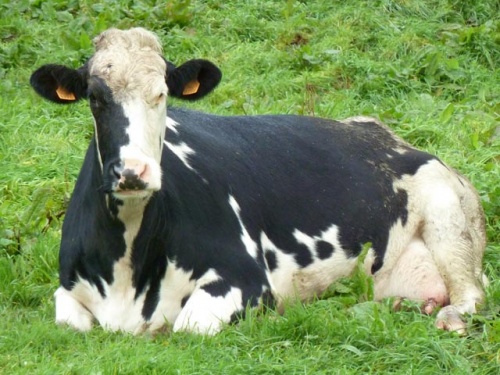
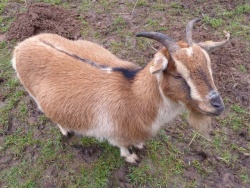
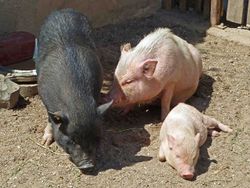
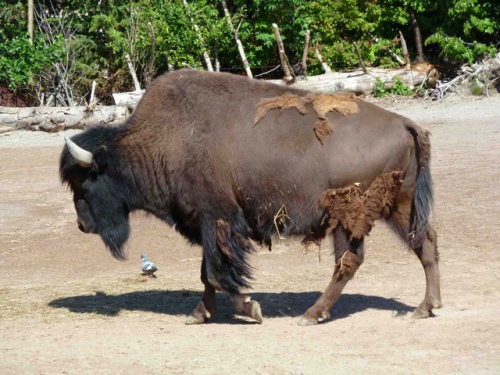
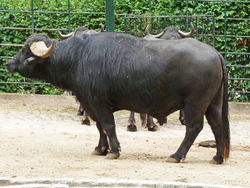
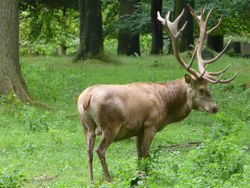
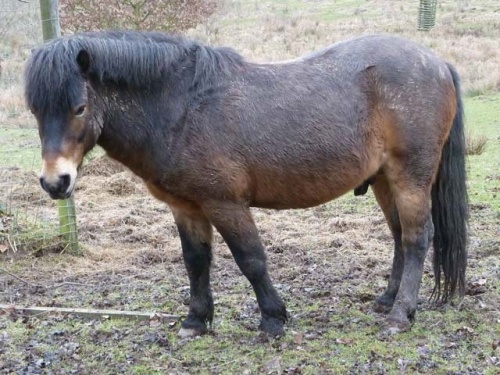
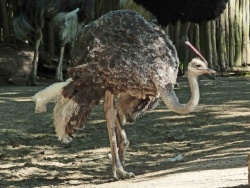
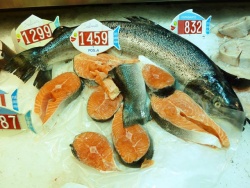

 a kotori web solution
a kotori web solution